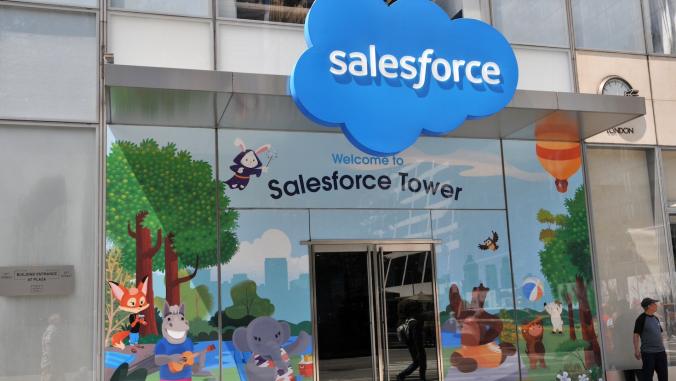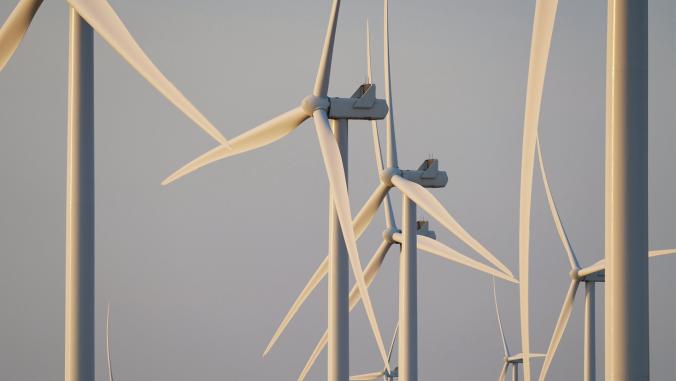Alphabet moonshot Tidal heralds the age of precision aquaculture
Demand for protein from sea creatures such as tuna, salmon and shrimp is growing far faster than for animal proteins.

Tidal CEO Neil Davé said the X moonshot's initial focus is on developing technologies that can provide fish-farming operations with greater visibility into what's happening underwater. Its first testing partner is salmon company Mowi.
Much of the fuss related to sustainable food systems is focused on land-centric technology solutions. The next horizon, however, may lie offshore. Think precision aquaculture.
For the past three years, X, the "moonshot factory" at Alphabet, has been consulting fish farmers around the world in preparation for its latest venture called Tidal. Its mission: to develop technologies that help those in the business of raising fish do so more sustainably.
The system it’s developing (and soon to be testing) includes an underwater camera and "machine perception" algorithms that help collect data about environmental factors, such as oxygen levels and temperature, and also about animal activity, to help better predict feeding schedules.
"Today, the health and welfare decisions for thousands of fish are based on observing a few individual fish that are taken out of the water and manually inspected — a data-gathering process that’s time-consuming, unreliable and impossible to scale," writes Neil Davé, general manager for Tidal, in a Medium post.

This is not easy stuff. If you think using mobile phones, drones, sensors and other technologies out in the field to get more precise about agricultural practices is challenging, consider what Tidal is up against. Not only is seawater extremely tough on electronic components, transmitting data underwater is still far from easy — as Davé notes, GPS and Wi-Fi don’t work. Full stop.
The market for precision aquaculture solutions is still small relative to precision agriculture — an estimated $764 million by 2024. That compares with the roughly $4.7 billion spent on farming tech in 2019.
But aquaculture is a huge and growing business, with implications just with massive food companies but also for smaller, local businesses that rely on fish for their livelihoods.
Although the X project isn’t disclosing many details, the technology is being tested by Mowi, the world’s largest producer of Atlantic salmon, delivering about one-fifth of the farm-raised salmon bought globally. The company is rolling out the technology at multiple sites in Norway.
About 17 percent of the animal protein consumed by humans comes from fish, crustaceans and mollusks, and about 3 billion people depend on wild-caught and farmed seafood as their primary source of protein. Demand for sea creatures such as tuna, salmon and shrimp grew 3.2 percent annually between 1961 and 2016 — that’s far faster than the demand for animal proteins and the growth in population, according to the United Nations Food and Agriculture Organization.
That growth has implications for wild populations, of course, as fisheries grapple with how to maintain enough stock to preserve future generations. But aquaculture supplies more of the fish that winds up on the plates of consumers globally, at least from a dollar-value standpoint — the industry generates $250 billion in annual revenue, compared with $170 billion for wild catches.We may have reached the point where advanced analytics will take off within the fishing sector.
Given the voracious appetite for seafood, stakeholders across the industry are exploring how technology — including optical and radar sensors on satellite (which address that pesky transmission problem), underwater drones equipped with cameras, and artificial intelligence — could aid the cause of seafood sustainability. Plus, don’t forget what’s showing up on-board vessels, like the blockchain-enabled traceability system being used by Raw Seafoods to keep tabs on wild-caught scallops.
"While fishing companies, regulators and environmentalists now apply these tools, their use is typically limited to small-scale pilots," notes McKinsey & Co., in a recent report. "But we may have reached the point where advanced analytics will take off within the fishing sector."
Michael Rohlfsen, vice president of business development for investment firm TechAccel, which specializes in food-tech innovation, said there are myriad opportunities for biotech innovation around aquaculture — including better approaches for water treatment and protein alternatives that ensure the health of the fish and shrimp being raised. Salmon are particularly "finicky," so any effort to better-understand their behavior in pens as opposed to how they act in the open ocean would benefit the industry, he said.
The tide is changing, indeed.
This article first appeared in GreenBiz's weekly newsletter, VERGE Weekly, running Wednesdays. Subscribe here. Follow me on Twitter:@greentechlady.





